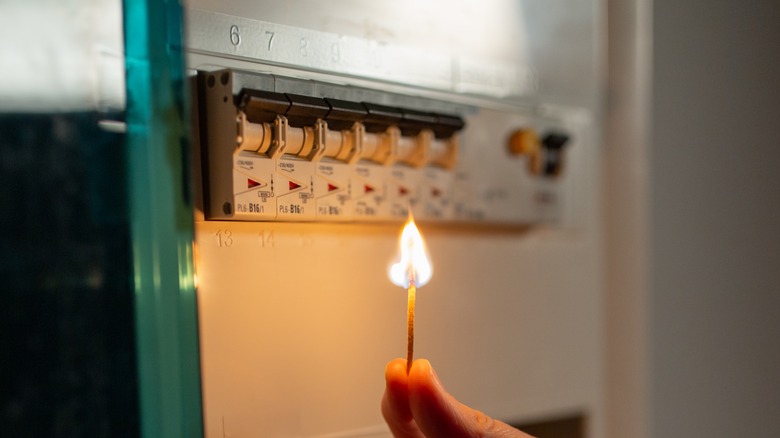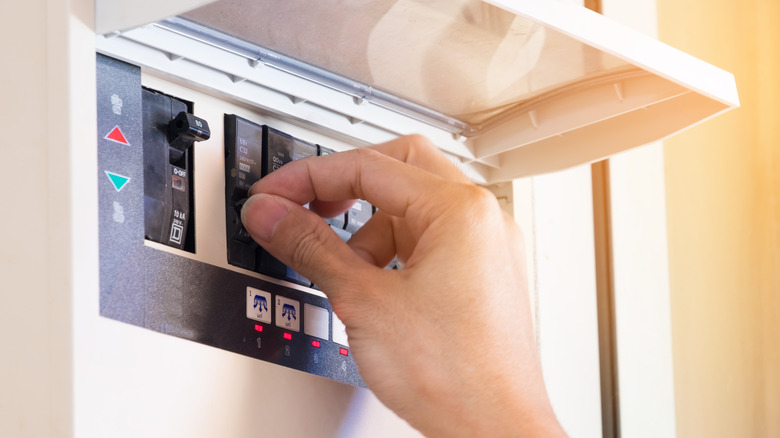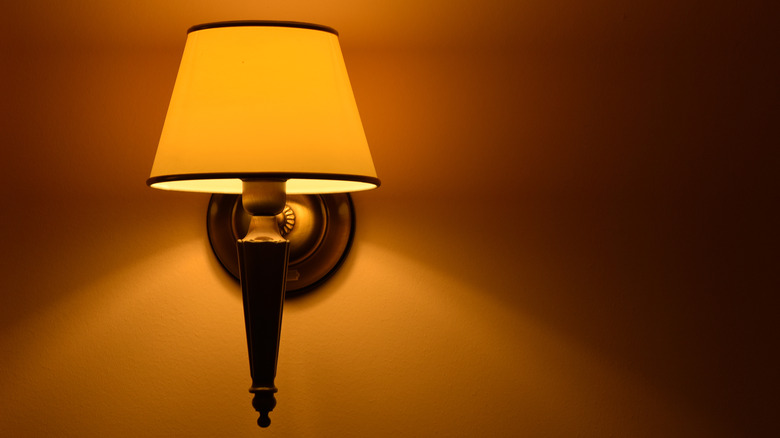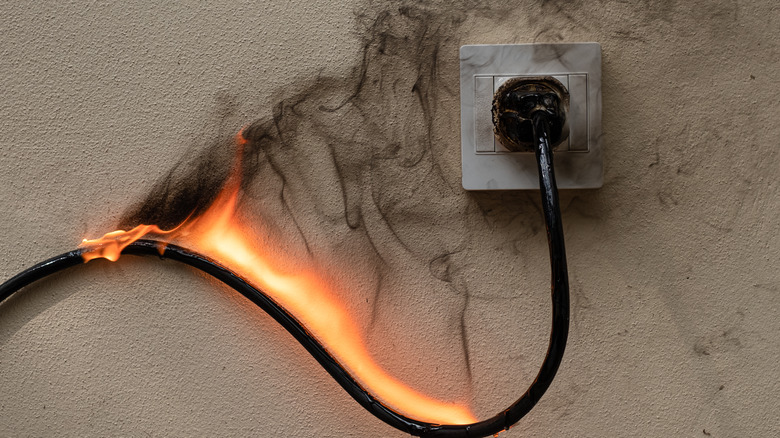3 Signs Your Home Is Filled With Faulty Wiring
Whether it's obvious or not, your home may be giving you clues of defective wiring. From lights and appliances to heating, cooling, technology, or tools, properly functioning power is essential within the home. In the early days of domestic electricity, two wires ran parallel to each other inside walls and ceilings. This type of wiring was known as Knob & Tube. Over the years technicians have evolved their techniques to include rag wiring, non-metallic (NM), and aluminum wiring. These days, electrical engineers use modern Romex, a stretchy, non-metallic type of wiring that is both heat and fire resistant as well as reasonably priced and easy to work with, per Audubon Home Inspections. Wires are covered and insulated in a color-coded PVC jacket, which corresponds to their size.
According to Home Inspection Insider, electrical wiring can last up to 70 years if installed properly. The copper itself can function for a century. If you're questioning the status of your home's wiring, age is not the only thing to be aware of. Some indicators may be more evident than others, like frayed wires and smoke or odorous emissions, which should receive immediate attention. You should look and listen for other faulty sights and sounds too, especially if wires have become ungrounded, meaning there's no longer a copper ground wire connecting the circuit and the panel. Also pay attention to any damage on the outer covering that protects the bare wires. Keep reading to learn how to spot faulty wiring in your home!
The circuit breakers keep tripping
If you experience power outages in a particular part of the house repeatedly, it's time to check the circuit breakers. Circuit breakers provide an important line of defense within a home's electrical system. Anytime a current runs at too high a level, the breakers trip to shut down the power in an effort to prevent property damage and personal injury from potential shocks or fires. If the lamps and overhead lights of your home are putting on their own magnificent light show, your circuit breakers might be on overload and need to be checked, per American Home Shield.
First check the circuit breaker box. Make sure everything is labeled correctly; this will make locating the specified breaker easier and faster. To reset it, flip the switch off, then back on again. If the circuit continues to trip time and time again, look for the last thing that was plugged into the house, then check the number of amps allowed to channel through your wiring. This figure is typically located at the top of the panel. According to Hiller Plumbing, vintage homes might be set for 60-amp wiring, while modern houses should be at 200 amps. If you see or smell burning, if the box is too hot to touch, or any wires have melted, these are other clear signs of damage. Regardless of its condition, it's a good idea to replace your breaker if it's more than 30 years old. Seek professional assistance if necessary.
The lights are constantly dimming and flickering
Another significant sign that your electrical wiring may be on the fritz is lights that constantly flicker and dim on their own. You may first want to experiment with the switch and plug to make sure those connections are working correctly, keeping an eye out for any discoloration on the outlets. If you've already checked the breaker activity, be aware that a recently added appliance could be sapping power from your home's electrical system. Although the root cause could turn out to be as simple as a loose bulb, if nothing else adds up, the dimming is likely related to unstable wiring. According to Estes Services, wires don't only become loose inside electrical panels, switches, and outlets. Potential fire risks can develop all over your house.
Arcing, in particular, is a serious threat for fire damage. For instance, if there is space between a plug and the outlet it is plugged into, the current may jolt forward to fill that space and get power to the plug. A short circuit is another possible culprit. This happens when a hot, active wire and normal wire cross each other by means of loose connections, a slipped wire, or damage from critters possibly nibbling on them. If the same flickering is frequent and beyond your jurisdiction, especially when an appliance is involved, you'll need to reach out to a licensed professional to determine the ultimate solution.
You hear buzzing or crackling sounds
It's normal to hear a light hum of electricity in the air from telephone wires, but when it comes to loud buzzing or crackling within your home, you need to take notice. Listen around the circuit breakers for any noises, as something may need to be repaired or replaced, preferably by a qualified electrician. You can also turn off all of the breakers, then turn them back on one by one and listen throughout your home to see if you can find where it's coming from. Buzzing can be a sign that sparks may soon fly. When circuits are too laden with electricity they make noise, per Top Tech Electric. If you hear anything, don't wait for fireworks; turn off all the circuits pronto.
If you also hear crackling, it's a sign that the wires may be starting to arc. If you only hear crackling in one specific and contained area, simply turn off the corresponding breaker right away. If you're unsure or you hear it in other areas, go ahead and turn them all off. Once you've found the problem area, call in the professionals. According to Xintuby, an electrician may examine the power outlet for existing damage, then test the wire for a loose connection or for any further harm that's happened. When it comes to faulty wiring, there are many basic signals to look and listen for, so don't be left in the dark.



